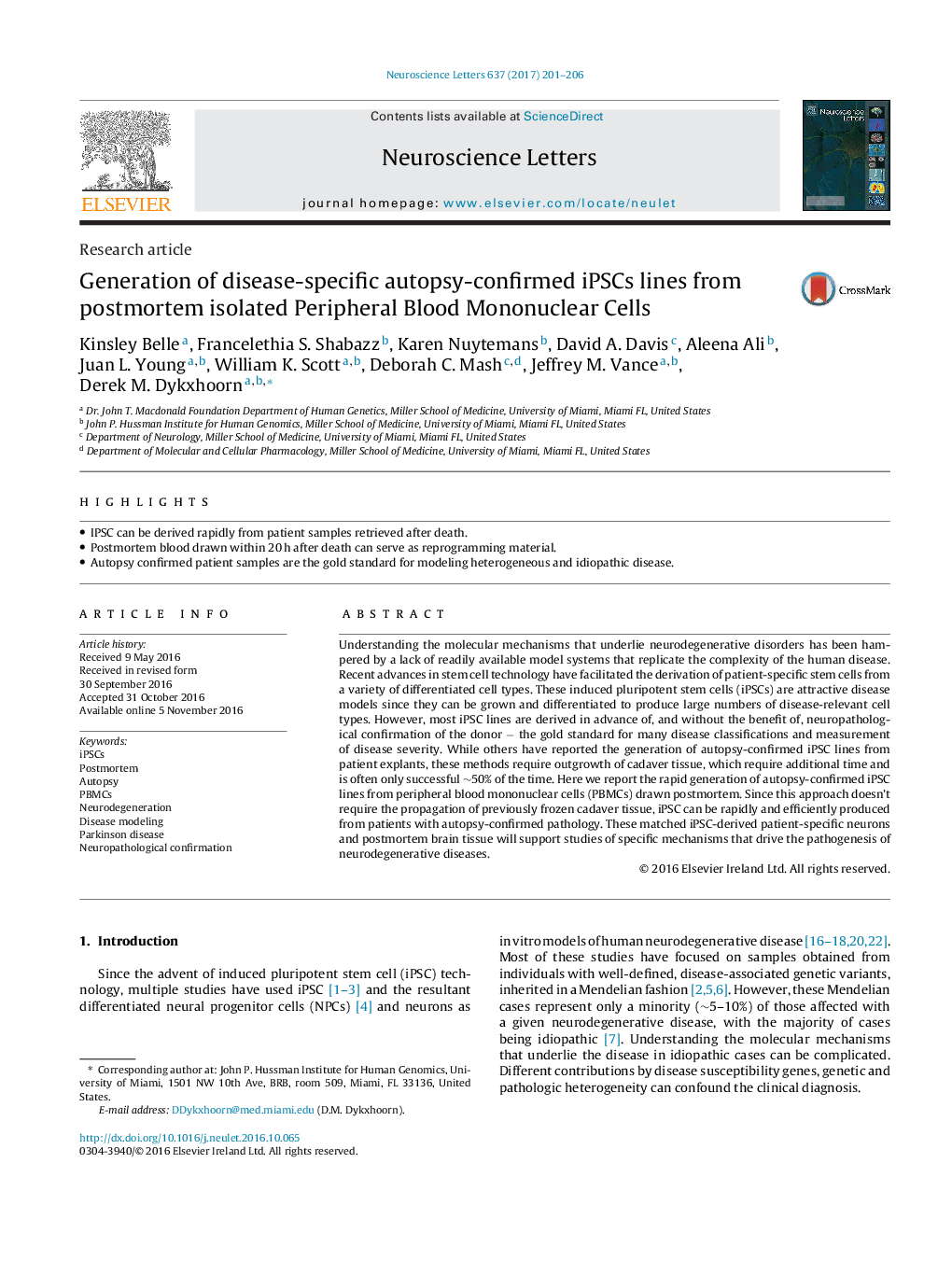| Article ID | Journal | Published Year | Pages | File Type |
|---|---|---|---|---|
| 5738911 | Neuroscience Letters | 2017 | 6 Pages |
â¢IPSC can be derived rapidly from patient samples retrieved after death.â¢Postmortem blood drawn within 20 h after death can serve as reprogramming material.â¢Autopsy confirmed patient samples are the gold standard for modeling heterogeneous and idiopathic disease.
Understanding the molecular mechanisms that underlie neurodegenerative disorders has been hampered by a lack of readily available model systems that replicate the complexity of the human disease. Recent advances in stem cell technology have facilitated the derivation of patient-specific stem cells from a variety of differentiated cell types. These induced pluripotent stem cells (iPSCs) are attractive disease models since they can be grown and differentiated to produce large numbers of disease-relevant cell types. However, most iPSC lines are derived in advance of, and without the benefit of, neuropathological confirmation of the donor â the gold standard for many disease classifications and measurement of disease severity. While others have reported the generation of autopsy-confirmed iPSC lines from patient explants, these methods require outgrowth of cadaver tissue, which require additional time and is often only successful â¼50% of the time. Here we report the rapid generation of autopsy-confirmed iPSC lines from peripheral blood mononuclear cells (PBMCs) drawn postmortem. Since this approach doesn't require the propagation of previously frozen cadaver tissue, iPSC can be rapidly and efficiently produced from patients with autopsy-confirmed pathology. These matched iPSC-derived patient-specific neurons and postmortem brain tissue will support studies of specific mechanisms that drive the pathogenesis of neurodegenerative diseases.
